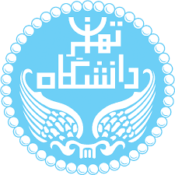Dar Al-Hikma High Education Institute, in collaboration with University of Tehran – College of Farabi
“New Online University Courses”
Dar Al-Hikma High Education Institute, in collaboration with University of Tehran – College of Farabi, is offering a set of new online courses through the learning management system (LMS).
At the moment the following courses are available for registration:
-
- Imamiya Teachings by Mohammadhossein Latifi
- Critical Thinking by Shirali Shoja
- Shia Geopolitics by Javid Akbari
- Each course is made up of 16 x 70 minute online sessions.
- The cost of each course is $40 (US).
Students can register in one or multiple courses. - The assignments and evaluation of courses will be done online.
- After successful completion of course requirements, a certificate from University of Tehran – College of Farabi and Dar Al-Hikma will be awarded and mailed.
To register:
For more information:
“Critical Thinking”
Course Goal: Learning the most important subjects and methods in critical thinking and familiarization of the types of fallacies
Course Outline:
· Definition of thinking and the essence of critical thinking
· Relationship of critical thinking with logic, epistemology, and philosophy
· Primary capabilities and limitations of knowledge: sense, reason, testimony, and authority
· Definition, its types and its role in expressing thought: clarity and transparency in the discussion
· Ethics of debate and argumentative skills
· Essence of reasoning and its types
· Using direct arguments in proving or denying allegations
· The function of analogy (Tamthil) and induction (Istiqra) in criticism
· Types of a syllogism (Qiyas) and analysis of the manner of formal and material errors in a syllogism
· Fallacy and its relationship with reasoning
· Types of fallacy and how to recognize each one of them
· Purpose of critical thinking and the importance of dialogue culture
“Shia Geopolitics”
Course Goal: A general understanding of Shiite’s socio-political life in the geography of the world.
Course Outline:
– Shia in the world of Islam
– The Shia majority countries (Iran, Iraq, Bahrain, Lebanon, Azerbaijan, Yemen)
– The Shia minority countries (India, Afghanistan, Pakistan, Saudi Arabia, Kuwait, Syria,
Turkey, Egypt, Oman)
– Shia in non-Islamic countries:
– Europe
– America (North America, Central America, and South America)
– Africa
– Far East
– Pacific
– Eurasia
– Some significant cultural peculiarities of each of the Shitte communities in the world
– Internal problems of Shittes (e.g., Shia massacre in India and Pakistan, not being
recognized as Shia.)
– Shiite’s external difficulties and pains (occupying Iraq & Afghanistan, Iran’s being
exposed to invasion, etc.)
– Common rituals and symbols of Shiites around the world
“The Imamiyyah Teachings”
1. What are the random teachings of Shi’a?
2. What are the specific teachings of Shi’a?
3. What are the teachings that give identity to doctrinal
Shi’ism?
4. Is there a consensus in interpreting the giving- identity,
random, and specific teachings of imamiyyah?
5. What similarities and differences do exist between the Shiite and Mu’tazilah?
A. Course Goal: definition of theology; the first theological sects; theological sects and schools of Ahl al-Sunnah, oppositions of Ahl al-Hadith against theology, the position of Shia Imams on theology, Shitte Theology Periods, Shia Theological Schools
B. In the 1rst century AD (the first four Shia Imams, Medina School)
1. Foundations and theological preferences in the anecdotal heritage of the first four Shia Imams
2. Theologians and Shia debates in this period and type of their theological activity
3. The intellectual Status of Medina
C. Kufa School (Period of the next four Shia Imams)
1. time of Kufa school (from the early 2nd century to the early 3rd century)
2. Kufiology (intellectual currents of Kufa from the early formation of Kufa in the late third decade of the 1rst century; influential factors in Kufa Shiism)
3. Shia currents of Kufa in this period
4. Renowned Shia theologians in this period (their ideas, praise, and criticism about them, from Zarareh ibn A’youn to Ibn Yunes Abd al-Rahman to Fazl ibn Shadan)
5. Types 4 Shia Imams encounter with theology and theologians
D. The Qum School (Period of the next four imams and occultation till mid-fourth century)
1. The time of Qum School
2. Qum’s background and its role in Shia history
3. Anecdotal and scientific center of Qum from early third century (classes of Qum traditionists)
4. Intellectual trends in Qum and Theological approach of Qum traditionists (according to Sheykh Sadugh)
5. Theological role and approach of deceased al-Kulayni
E. The Baghdad School
1. Rationalist backgrounds of Baghdad (theological line leading to Fadal ibn-Shadan, Shitte Muta’zilites
2. The role of Sheykh Mufid (intellectual life, works, theological approach)
3. The culmination of rationalism with Sayyid Murtadhā (scientific life, works, theological foundations)
4. Baghdadi’s criticisms (Sheykh Mufid and Sayyid Murtadhā) of Qum school
5. After Sayyid Murtadhā (in Damascus with Halabiyyan, i.e., Ibn Baraj, and Abu Salah al-Halabi in Rey)
6. After Sheykh Mufid (Al-Karajaki the writer of Kanz al-Fawaid)
F. Hilli School
1. Formation of Helle and its scientific center (time, influential figures)
2. Rationalist and Ijtihadi approach in Hilli from Ibn Idris to Sadid al-Din Hamsi and Veeram
3. Influential scholars in improving the theological approach of Hilli from Hamsi to Allamah Hilli
4. Moderate Shi’ism with Allamah Hilli (Scientific life, works, theological and intellectual approaches, philosophical theology)
5. After Allamah Hilli to Fazil al-Miqdad and Ibn Fahd Hilli
6. The role of Hilli in Shiite and scientific approaches of Iran and Jabal Amel
7. Philosophical, theological, and mystical schools of Shiraz and Isfahan (integration of Peripatetic school with Illuminationism and mysticism (all in the service of ideas), Dashtaki and Davani in Shiraz; Mir Damad, Mir Fendereski, and Bahāʾ al-dīn al-ʿĀmilī (i.e., Shaykh Bahai) in Isfahan, Transcendentalism of Mulla Sadra.
G. Akhbarism (from news or report)
1. Background (influential noetic and non-noetic factors in the formation of Akhbarism, the role of Safavid in Zaher-garayi (oriented towards appearance), the relation of Akhbaris with Qum’s text-oriented approach)
2. The established role of Mohammad Amin Estarabadi (scientific life, works, and opinions, his immediate disciples)
3. Akhbari’s prominent figures (in the 10th-12th century)
4. Theoretical foundations of Akhbarism (extremist and moderate tendencies in Fiqh Foundations and Principles)
H. The Contemporary Theological Movements (Shaykhism, Tafkik (segregation) School, after Transcendentalism)
I. Religious New Thinking (and the revival of Traditional Theology) over the past 50 years

